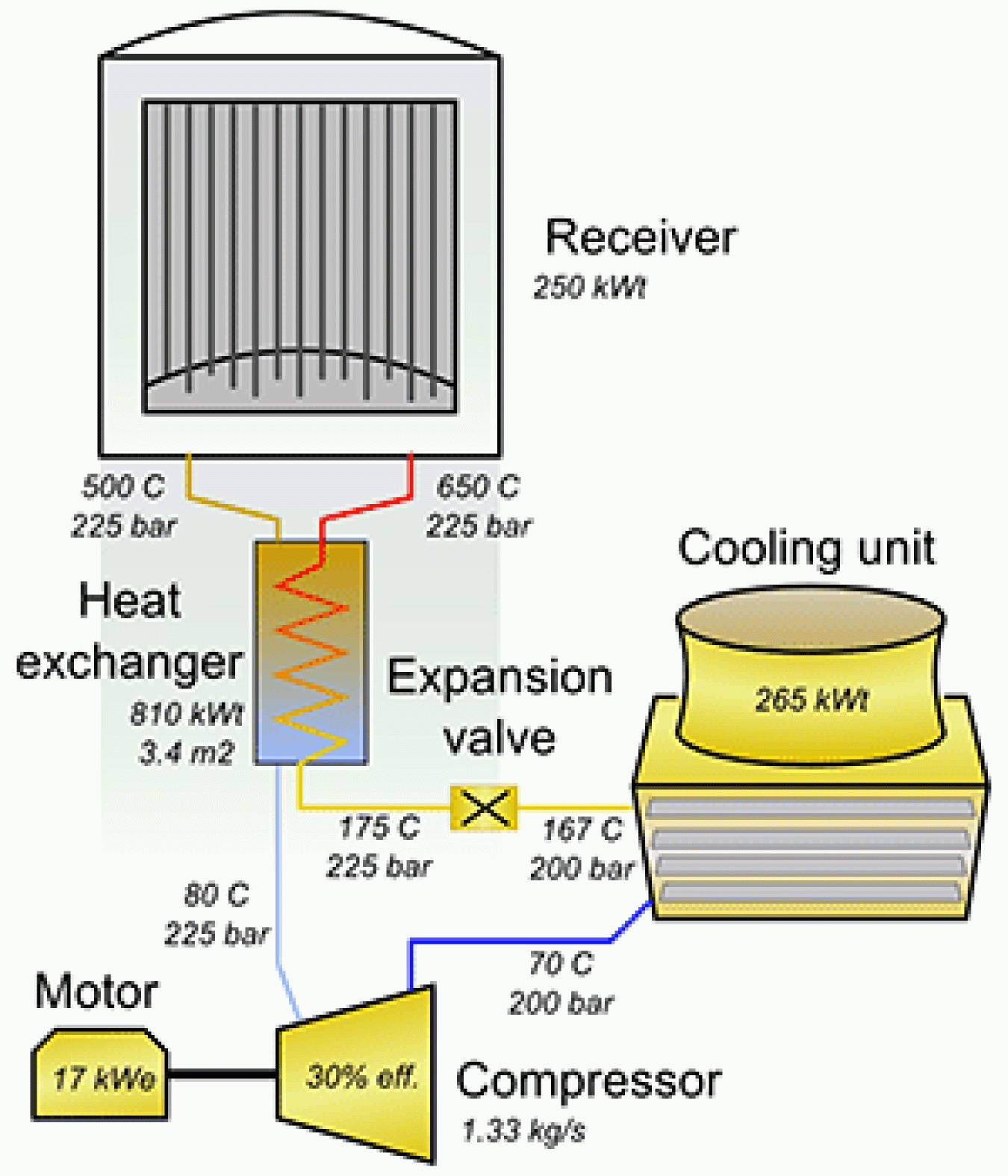-- This project is inactive --
The National Renewable Energy Laboratory (NREL), under the National Laboratory R&D competitive funding opportunity, is working to develop, characterize, and experimentally demonstrate a novel high-temperature receiver technology using supercritical carbon dioxide (s-CO2) directly as the heat transfer fluid (HTF). A high-temperature receiver that is compatible with s-CO2 enables a significant increase in power cycle efficiency and reduces solar-field size, thereby decreasing the installed cost of concentrating solar power (CSP) systems.
Approach
The team will expand the scope of its "nested-tube" receiver design configured for a reheat s-CO2 power cycle to include other types of s-CO2 receivers and power cycle configurations. The approach will use a closed receiver configuration to directly heat s-CO2 in the receiver and deliver it to the power cycle without intermediate heat exchange. NREL will analyze three direct receiver configurations and select a single concept for detailed prototype design and construction for on-sun testing. The criteria for success will be a receiver that can achieve 90% thermal efficiency and produce s-CO2 above 650°C. The team will also demonstrate a receiver that can withstand 10,000 thermal cycles before failure and has an expected commercial cost of less than $150/kWth.

Innovation
The s-CO2 system uses no water, which is significant given that CSP plants are typically located in hot, dry climates where water is scarce. The direct s-CO2 receiver has numerous potential advantages over indirect molten-salt receivers. Additionally, heating s-CO2 directly delivers benefits that are most pronounced with smaller systems that have a few hours of thermal storage, including the ability to place the power cycle in the receiver to minimize the length and cost of high-pressure piping.
Learn about other concentrating solar power research.

